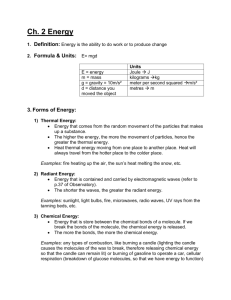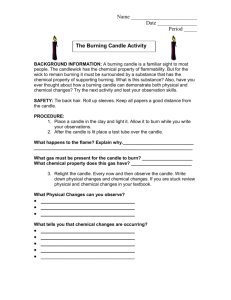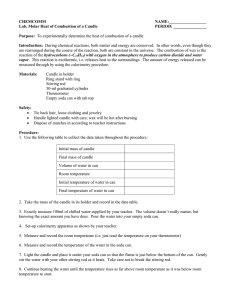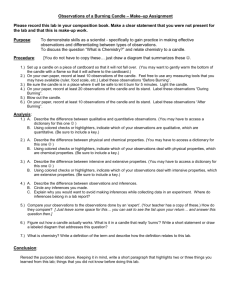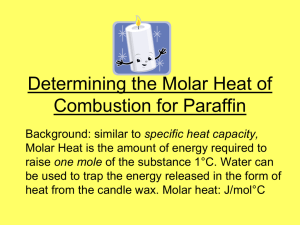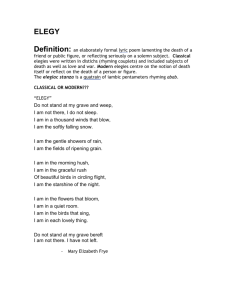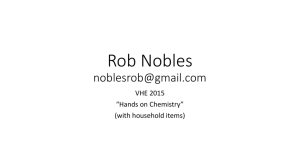Lab Unit 5 & 6 - Miss S. Harvey
advertisement
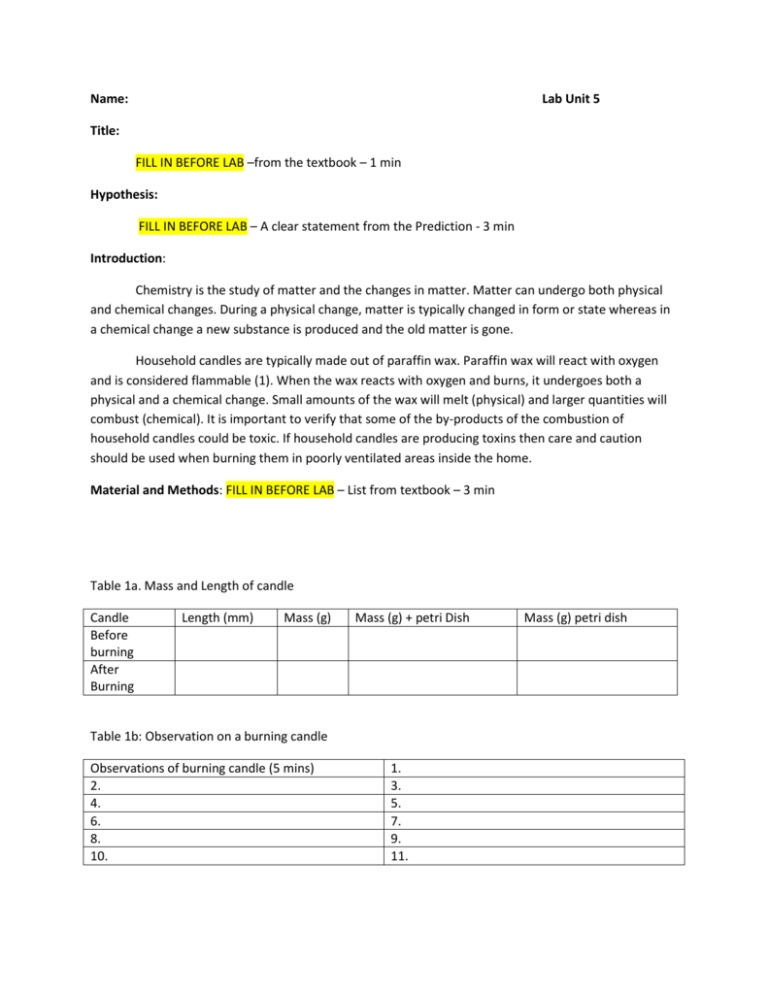
Name: Lab Unit 5 Title: FILL IN BEFORE LAB –from the textbook – 1 min Hypothesis: FILL IN BEFORE LAB – A clear statement from the Prediction - 3 min Introduction: Chemistry is the study of matter and the changes in matter. Matter can undergo both physical and chemical changes. During a physical change, matter is typically changed in form or state whereas in a chemical change a new substance is produced and the old matter is gone. Household candles are typically made out of paraffin wax. Paraffin wax will react with oxygen and is considered flammable (1). When the wax reacts with oxygen and burns, it undergoes both a physical and a chemical change. Small amounts of the wax will melt (physical) and larger quantities will combust (chemical). It is important to verify that some of the by-products of the combustion of household candles could be toxic. If household candles are producing toxins then care and caution should be used when burning them in poorly ventilated areas inside the home. Material and Methods: FILL IN BEFORE LAB – List from textbook – 3 min Table 1a. Mass and Length of candle Candle Before burning After Burning Length (mm) Mass (g) Mass (g) + petri Dish Table 1b: Observation on a burning candle Observations of burning candle (5 mins) 2. 4. 6. 8. 10. 1. 3. 5. 7. 9. 11. Mass (g) petri dish Table 2: Observations of Copper Wire above around a burning candle Observations Straight Copper Wire (above) Copper Coil (around) Table 3: Cobalt chloride and Bromophenol Blue indicator tests Reagent Cobalt chloride Bromophenol Blue result Meaning of result Results: WRITE AFTER LAB – clearly write all of the results from your tables and refer to the specific table the data is in. For example The burning candle was observed to…. as shown in Table 1b. It lost a total mass of _____ during 5 minutes of combustion (table 1a). The straight copper wire _____ when held above the flame (table 2) however the coiled copper wire _____ (table 2). The by-product gas produced from combustion of the candle was positive for _________ and ___________ as indicated by the cobalt chloride and the bromophenol blue test (table 3). Discussion The data collected and observed in this experiment support the hypothesis that both chemical and physical changes can be observed when a candle burns. The candle lost mass during the combustion and was converted to heat, light and gas – all indicators of a chemical change. The gas tested positive for Carbon dioxide and water. Physical changes were observed when the candle was melted and resolidified. Conclusion Matter can undergo both chemical and physical changes. A physical in matter does not yield and new products, simply changes the state or form of the original matter. Whereas chemical changes only occur during the production of new substances. It is possible to have both changes occurring concurrently, as is the case with a burning candle. The wax from the candle melted into a new form (physical change) but was also converted to carbon dioxide, water, heat and light during the combustion of the candle and its wick.
